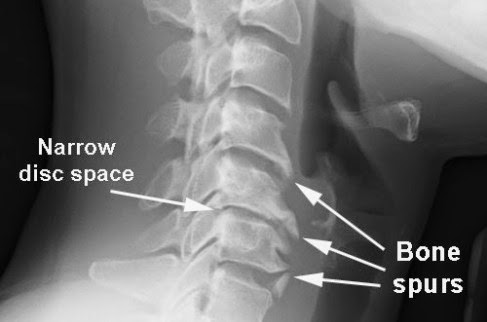In the group of osteoarthritis illness, we can find the spondylosis arthritis which also called cervical osteoarthritis or, more commonly, the neck arthritis.
As any joint in the rest of the body, the joints of the spinal cord can also suffer from degenerative disorders like this one. It is a form of arthritis most commonly met in elder patients, of the age of 60 or even more.
The wear causes damage to the bones in the neck area, which will become more stiff and painful. It is not a pleasant disease, and the treatment will have to be carried on for the rest of the patient’s life.
Little can be done to undo the effects of this disease, but with the proper approach a lot of patients found some release in time and restored a part of their mobility.
Neck Arthritis Mechanism:
 |
| The Mechanism of Neck Arthritis |
Looking at the mechanism of the neck arthritis, it mainly affects the facet joints, the discs and the bones.
Our neck (cervical spine) is composed out of multiple segments called vertebras. Each vertebra stands upon the next one and so on, in order to form our spine.
When connected they have a whole in the middle, like a canal, which is housing our spinal cord and nerves.
The facet joints are in the sides of the vertebras, and the discs sustain from underneath, each vertebra’s weight.
The degeneration of these facet joints lead to shrinking in the height of the discs, losses of cartilage in the joint area, bony spurring or even bone thickening.
Because of these factors the canal inside the vertebras gets narrower, having, as a result, pressuring the spinal cord, which implicitly leads to the set of symptoms associated with the disease.
There are many causes and lifestyle habits that may lead to cervical osteoarthritis. To know more about these causes, symptoms and ways of neck arthritis treatment click here Neck Osteoarthritis.

